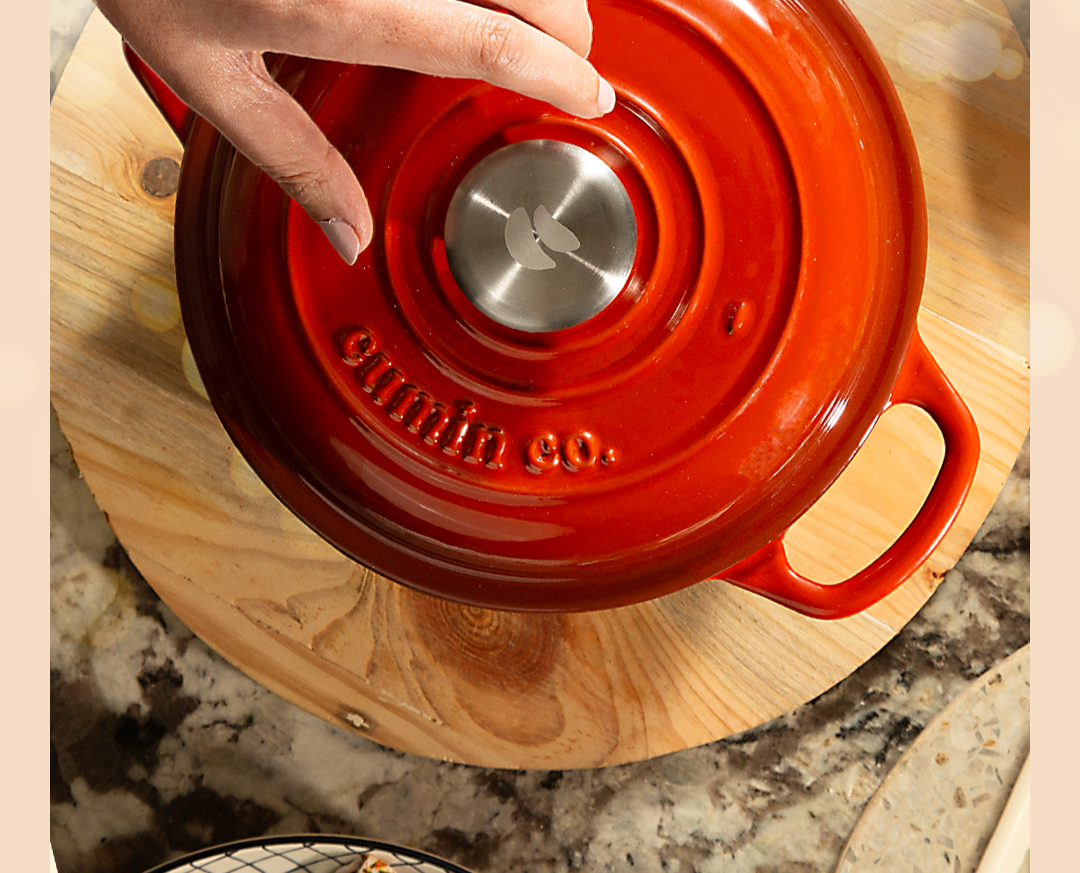If your dosas stick, your rotis are uneven, or your tawa warps after just a few months – it's not you. It’s your cookware. In Indian kitchens, the tawa is one of the most-used tools, yet it’s often the most overlooked.
Today’s home chefs are moving beyond non-stick pans and discovering the power of enameled cast iron dosa tawas. But what’s behind the buzz? Let’s explore how this single piece of cookware can transform your kitchen experience.
Why Modern Kitchens Demand Better Cookware
In our grandmothers’ time, the heavy iron tawa was a staple. It produced flawless dosas and puffed-up rotis, but it also required constant care — seasoning, oiling, and avoiding rust.
Fast forward to today, and non-stick pans have taken over. But they don’t last long, and their coatings often come with health concerns.
This is where enamel-coated cast iron tawas step in, blending the best of tradition and modern innovation.
The Science Behind Enameled Cast Iron
Superior Heat Retention
Cast iron distributes heat evenly across the surface, eliminating those annoying cold spots that ruin your dosas.
Enamel Coating = No Seasoning Required
The glass-like enamel finish prevents rust and removes the need for seasoning while retaining the benefits of cast iron.
Toxin-Free Cooking
Unlike synthetic non-stick coatings, enamel is naturally non-reactive and safe for everyday use even at high temperatures.
What Makes It the Best Cast Iron Tawa in India?
1. Multi-Cooktop Compatibility
Looking for a cast iron induction tawa? Or something that works on gas and even ovens? This tawa handles it all.
2. Minimal Oil Cooking
Thanks to the enamel surface, you can use less oil without worrying about sticking.
3. Built to Last for Generations
This isn’t disposable cookware. A well-made enameled cast iron dosa tawa is an heirloom-quality investment.
Beyond Dosas: A Truly Versatile Kitchen Tool
This tawa isn’t just for South Indian breakfasts. Try using it for:
- Crispy chillas and pancakes
- Perfectly browned parathas
- Searing vegetables, paneer, and meats
- Even mini skillet pizzas!
How to Choose the Right Enameled Cast Iron Tawa
When shopping, consider:
- Size & Thickness – Wide enough for big dosas, thick enough for even heat.
- Price vs. Durability – A higher upfront price means decades of use.
- Compatibility – Works with induction, gas, and oven?
- Aesthetic Appeal – Colors like Jamun Blue and Emerald Green make it serve-worthy too.
Enameled Cast Iron Dosa Tawa Price: Why It’s Worth It
It’s tempting to opt for a cheaper aluminum or non-stick tawa. But consider how often you replace them. This is a one-time investment that saves money, time, and effort in the long run.
- Healthier cooking
- Toxin-free meals
- No recurring purchases
Care Tips for Long-Lasting Performance
- Clean with mild soap and a soft sponge.
- Avoid sudden temperature changes to prevent thermal shock.
- Use wooden or silicone spatulas to preserve the enamel.
Conclusion
An ordinary tawa might get the job done, but a premium enameled cast iron dosa tawa elevates your cooking to another level. Whether it’s crispy dosas or soft rotis, the results speak for themselves.
Upgrade your kitchen today and experience why so many home chefs call it the best cast iron tawa in India.







